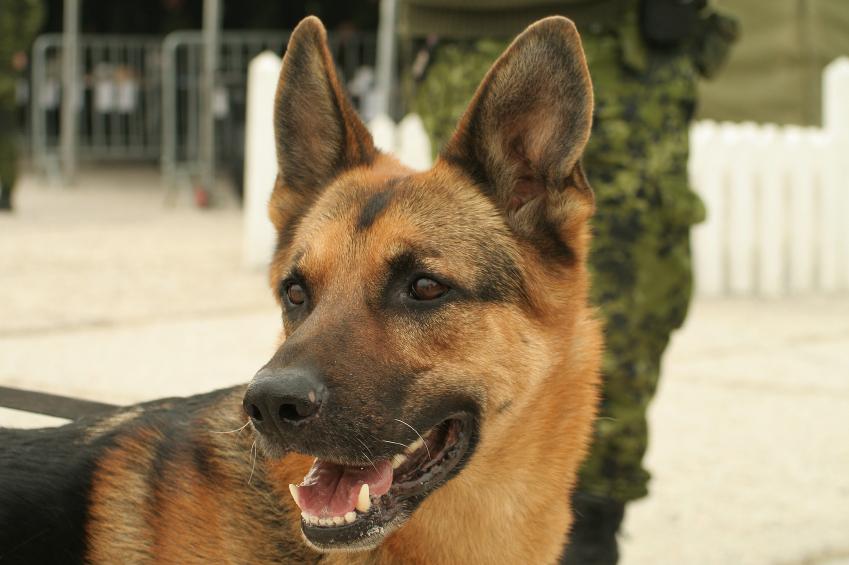Last Updated December 27, 2022.
The recently released movie “Max” from Warner Bros. is about a military dog that returns to the United States from Afghanistan and is adopted by the family of his handler, a U.S. Marine who was killed in action. The movie highlights the contributions that dogs have made to the military and honors the dogs, their hero handlers, and the powerful bond that they share.
Dogs have been officially serving as four-legged soldiers in the United States military since World War I. Known as military working dogs (MWDs), they stand side-by-side with our servicemen and servicewomen and are more than just their companions – they are their protectors and actively contribute to U.S. combat operations. In fact, according to the American Humane Association, each MWD saves between 150-200 lives.
Here are some other facts you may not know about these K-9 comrades-in-arms.
2700+ Military Dogs
According to the U.S. Department of Defense, there are approximately 2,700 active-duty military working dogs in the U.S. Armed Forces. They are deployed around the world, with a large number serving in Afghanistan and Iraq.
Trained in Texas
All military working dogs and their handlers are trained at the 341st Training Squadron located at Lackland Air Force Base in San Antonio, Texas. Each year approximately 425 Air Force, Army, Navy and Marine students are trained to be handlers, 185 dogs are trained and certified to detect explosives, and 85 dogs are trained for patrol and drug detection.
Standard Military Dog Breeds
Standard MWD breeds are German Shepherds, Dutch Shepherds, Belgian Malinois, and Labradors.
MWDs are Primarily Trained for:
• Explosive detection
• Narcotics detection
• Search & rescue
• Sentry
• Guard Duty
• Scout and patrol
Traits of a MWD
• Acute sense of smell, hearing and vision
• Drive to prey and hunt
• Sociable
• Aggressiveness
• Possessiveness
• Easily trained
• Motivated to please
MWDs are Being Returned Home to the U.S.
In the past, military dogs were considered “equipment” and either left behind or euthanized when they were no longer able to work. This has changed. In 2000, “Robby’s Law” was passed that facilitates “the adoption of retired military working dogs by law enforcement agencies, former handlers of these dogs, and other persons capable of caring for these dogs.” Save-A-Vet is one organization that helps find suitable homes for K-9 veterans.
Another positive development is the passing of the 2016 National Defense Authorization Act (NDAA) . Previously, handlers who wanted to bring a dog home after their tour of duty was over could do so, but they had to pay for the transportation, which is very expensive. This act mandates the return of retiring military working dogs to U.S. soil and the first rights of adoption go to former handlers and their families. Visit the American Humane Association website for details on this important act.
There are U.S. War Dog Memorials
There are various United States War Dogs Memorials around the country. From Virginia, to Colorado, to California, and more, these memorials pay tribute to all of America’s war dogs, past present, and future.
Dogs are more than man’s best friend; they are heroes! To learn more about military working dogs, visit The United States War Dogs Association website. If you are interested in adopting a retired MWD, visit Saveavet.org.
The information provided in this blog post is for informational purposes only.

Friendship Rewards Program
Refer a friend and get a $25 Omni Gift Card



